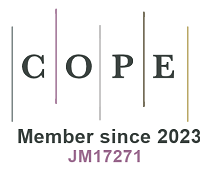REFERENCES
1. Beidokhti MZ, Naeeni ST, Abdi Ghahroudi MS. Biosorption of nickel (II) from aqueous solutions onto pistachio hull waste as a low-cost biosorbent. Civ Eng J. 2019;5:447-57.
2. Liu J, Liu YJ, Liu Y, Liu Z, Zhang AN. Quantitative contributions of the major sources of heavy metals in soils to ecosystem and human health risks: a case study of Yulin, China. Ecotoxicol Environ Saf. 2018;164:261-9.
3. Shen F, Mao L, Sun R, Du J, Tan Z, Ding M. Contamination evaluation and source identification of heavy metals in the sediments from the Lishui River watershed, Southern China. Int J Environ Res Public Health. 2019;16:336.
4. Sharma R, Saini KC, Rajput S, et al. Environmental friendly technologies for remediation of toxic heavy metals: pragmatic approaches for environmental management. In: Aravind J, Kamaraj M, Karthikeyan S, editors. Strategies and tools for pollutant mitigation. Cham: Springer International Publishing; 2022. pp. 199-223.
5. Malik L A, Bashir A, Qureashi A, Pandith A H. Detection and removal of heavy metal ions: a review. Environ Chem Lett. 2019;17:1495-521.
6. Ishaq S, Jabeen G, Arshad M, et al. Heavy metal toxicity arising from the industrial effluents repercussions on oxidative stress, liver enzymes and antioxidant activity in brain homogenates of Oreochromis niloticus. Sci Rep. 2023;13:19936.
7. Gutwiński P, Cema G, Ziembińska-buczyńska A, Wyszyńska K, Surmacz-górska J. Long-term effect of heavy metals Cr(III), Zn(II), Cd(II), Cu(II), Ni(II), Pb(II) on the anammox process performance. J Water Process Eng. 2021;39:101668.
8. Özdemir S, Serkan Yalçın M, Kılınç E. Preconcentrations of Ni(II) and Pb(II) from water and food samples by solid-phase extraction using Pleurotus ostreatus immobilized iron oxide nanoparticles. Food Chem. 2021;336:127675.
9. Ali S, Hussain S, Khan R, et al. Renal toxicity of heavy metals (cadmium and mercury) and their amelioration with ascorbic acid in rabbits. Environ Sci Pollut Res Int. 2019;26:3909-20.
10. Byber K, Lison D, Verougstraete V, Dressel H, Hotz P. Cadmium or cadmium compounds and chronic kidney disease in workers and the general population: a systematic review. Crit Rev Toxicol. 2016;46:191-240.
11. Liu S, Shi J, Wang J, Dai Y, Li H, Li J, Zhang P. Interactions between microplastics and heavy metals in aquatic environments: a review. Front Microbiol. 2021;12:652520.
12. Duan C, Ma T, Wang J, Zhou Y. Removal of heavy metals from aqueous solution using carbon-based adsorbents: a review. J Water Process Eng. 2020;37:101339.
13. Genchi G, Carocci A, Lauria G, Sinicropi MS, Catalano A. Nickel: human health and environmental toxicology. Int J Environ Res Public Health. 2020;17:679.
14. Mokhtari N, Dinari M, Rahmanian O. Novel porous organic triazine-based polyimide with high nitrogen levels for highly efficient removal of Ni(II) from aqueous solution. Polym Int. 2019;68:1178-85.
15. Patil R, Sontakke T, Biradar A, Nalage D. Zinc: an essential trace element for human health and beyond. Food Health. 2023;5:13.
16. Kambe T, Taylor KM, Fu D. Zinc transporters and their functional integration in mammalian cells. J Biol Chem. 2021;296:100320.
17. Taiwo AM, Oyeleye OF, Majekodunmi BJ, et al. Evaluating the health risk of metals (Zn, Cr, Cd, Ni, Pb) in staple foods from Lagos and Ogun States, Southwestern Nigeria. Environ Monit Assess. 2019;191:167.
18. Shabbir Z, Sardar A, Shabbir A, et al. Copper uptake, essentiality, toxicity, detoxification and risk assessment in soil-plant environment. Chemosphere. 2020;259:127436.
19. Leyssens L, Vinck B, Van Der Straeten C, Wuyts F, Maes L. Cobalt toxicity in humans-a review of the potential sources and systemic health effects. Toxicology. 2017;387:43-56.
20. Fei Y, Hu YH. Design, synthesis, and performance of adsorbents for heavy metal removal from wastewater: a review. J Mater Chem A. 2022;10:1047-85.
21. Esalah J, Husein MM. Removal of heavy metals from aqueous solutions by precipitation-filtration using novel organo-phosphorus ligands. Separation Sci Technol. 2008;43:3461-75.
22. Dabrowski A, Hubicki Z, Podkościelny P, Robens E. Selective removal of the heavy metal ions from waters and industrial wastewaters by ion-exchange method. Chemosphere. 2004;56:91-106.
23. Oatley-radcliffe DL, Walters M, Ainscough TJ, Williams PM, Mohammad AW, Hilal N. Nanofiltration membranes and processes: a review of research trends over the past decade. J Water Process Eng. 2017;19:164-71.
24. Tran T, Leu H, Chiu K, Lin C. Electrochemical treatment of heavy metal-containing wastewater with the removal of COD and heavy metal ions: electrochemical treatment of heavy metal containing wastewater. J Chin Chem Soc. 2017;64:493-502.
25. Aarfane A, Bensemlali M, Elmelouky A, et al. Electrocoagulation efficiency probed using electrochemical impedance spectroscopy. Chin J Chem Eng. 2024;75:266-73.
26. Elgarahy A, Elwakeel K, Mohammad S, Elshoubaky G. A critical review of biosorption of dyes, heavy metals and metalloids from wastewater as an efficient and green process. Clean Eng Technol. 2021;4:100209.
27. Masoumi A, Ghaemy M. Adsorption of heavy metal ions and azo dyes by crosslinked nanochelating resins based on poly(methylmethacrylate-co-maleic anhydride). Express Polym Lett. 2014;8:187-96.
28. Chai WS, Cheun JY, Kumar PS, et al. A review on conventional and novel materials towards heavy metal adsorption in wastewater treatment application. J Clean Prod. 2021;296:126589.
29. Samiey B, Cheng CH, Wu J. Organic-inorganic hybrid polymers as adsorbents for removal of heavy metal ions from solutions: a review. Materials. 2014;7:673-726.
30. Geng Z, Lin Y, Yu X, et al. Highly efficient dye adsorption and removal: a functional hybrid of reduced graphene oxide-Fe3O4 nanoparticles as an easily regenerative adsorbent. J Mater Chem. 2012;22:3527.
31. Crini G. Recent developments in polysaccharide-based materials used as adsorbents in wastewater treatment. Prog Polym Sci. 2005;30:38-70.
32. Chakraborty R, Asthana A, Singh AK, Jain B, Susan ABH. Adsorption of heavy metal ions by various low-cost adsorbents: a review. Int J Environ Anal Chem. 2022;102:342-79.
33. Oladoye PO. Natural, low-cost adsorbents for toxic Pb(II) ion sequestration from (waste)water: a state-of-the-art review. Chemosphere. 2022;287:132130.
34. Abdollahi N, Moussavi G, Giannakis S. A review of heavy metals’ removal from aqueous matrices by metal-organic frameworks (MOFs): state-of-the art and recent advances. J Environ Chem Eng. 2022;10:107394.
35. Sikiru S, Abiodun OA, Sanusi YK, et al. A comprehensive review on nanotechnology application in wastewater treatment a case study of metal-based using green synthesis. J. Environ Chem Eng. 2022;10:108065.
36. Boraah N, Chakma S, Kaushal P. Attributes of wood biochar as an efficient adsorbent for remediating heavy metals and emerging contaminants from water: a critical review and bibliometric analysis. J Environ Chem Eng. 2022;10:107825.
37. Abdel-magied AF, Abdelhamid HN, Ashour RM, et al. Magnetic metal-organic frameworks for efficient removal of cadmium(II), and lead(II) from aqueous solution. J Environ Chem Eng. 2022;10:107467.
38. Gomri M, Abderrazak H, Chabbah T, et al. Adsorption characteristics of aromatic pollutants and their halogenated derivatives on bio-based poly (ether-pyridine)s. J Environ Chem Eng. 2020;8:104333.
39. Brirmi NEH, Chabbah T, Chatti S, et al. Effect of the pendent groups on biobased polymers, obtained from click chemistry suitable, for the adsorption of organic pollutants from water. Polym Adv Technol. 2022;33:3551-71.
40. Gupta S, Sireesha S, Sreedhar I, Patel C M, Anitha K L. Latest trends in heavy metal removal from wastewater by biochar based sorbents. J Water Process Eng. 2020;38:101561.
42. Ali H, Khan E. Bioaccumulation of non-essential hazardous heavy metals and metalloids in freshwater fish. Risk to human health. Environ Chem Lett. 2018;16:903-17.
43. Paithankar JG, Saini S, Dwivedi S, Sharma A, Chowdhuri DK. Heavy metal associated health hazards: an interplay of oxidative stress and signal transduction. Chemosphere. 2021;262:128350.
44. Rae IB, Gibb SW, Lu S. Biosorption of Hg from aqueous solutions by crab carapace. J Hazard Mater. 2009;164:1601-4.
45. Hu XF, Lowe M, Chan HM. Mercury exposure, cardiovascular disease, and mortality: a systematic review and dose-response meta-analysis. Environ Res. 2021;193:110538.
46. Chen R, Xu Y, Xu C, et al. Associations between mercury exposure and the risk of nonalcoholic fatty liver disease (NAFLD) in US adolescents. Environ Sci Pollut Res Int. 2019;26:31384-91.
47. Hensawang S, Chanpiwat P. Health impact assessment of arsenic and cadmium intake via rice consumption in Bangkok, Thailand. Environ Monit Assess. 2017;189:599.
48. Genchi G, Sinicropi MS, Lauria G, Carocci A, Catalano A. The effects of cadmium toxicity. Int J Environ Res Public Health. 2020;17:3782.
49. Musfirah M, Rangkuti AF. The lead exposure risk due to wells water consumption in code riverside community, Yogyakarta city. Kemas. 2019;14:318-25.
50. Thongsringklee M, Robson MG, Siriwong W. Health effects of low level exposure to lead among communication radio repair workers at Samutsakhon province, Thailand. Hum Ecol Risk Assess. 2021;27:344-51.
51. Rizwan M, Ali S, Hussain A, et al. Effect of zinc-lysine on growth, yield and cadmium uptake in wheat (Triticum aestivum L.) and health risk assessment. Chemosphere. 2017;187:35-42.
52. Yahya EB, Alqadhi AM. Recent trends in cancer therapy: a review on the current state of gene delivery. Life Sci. 2021;269:119087.
53. Ren C, Zhou Y, Liu W, Wang Q. Paradoxical effects of arsenic in the lungs. Environ Health Prev Med. 2021;26:80.
54. Rahaman MS, Rahman MM, Mise N, et al. Environmental arsenic exposure and its contribution to human diseases, toxicity mechanism and management. Environ Pollut. 2021;289:117940.
55. Rahman Z, Singh V P. The relative impact of toxic heavy metals (THMs) (arsenic (As), cadmium (Cd), chromium (Cr)(VI), mercury (Hg), and lead (Pb)) on the total environment: an overview. Environ Monit Assess. 2019;191:1-21.
56. Yoshinaga M, Ninomiya H, Al Hossain MMA, et al. A comprehensive study including monitoring, assessment of health effects and development of a remediation method for chromium pollution. Chemosphere. 2018;201:667-75.
57. Peixoto S, Henriques I, Loureiro S. Long-term effects of Cu(OH)2 nanopesticide exposure on soil microbial communities. Environ Pollut. 2021;269:116113.
58. Neff E, Dharmarajan G. The direct and indirect effects of copper on vector-borne disease dynamics. Environ Pollut. 2021;269:116213.
59. Salih HHM, El Badawy AM, Tolaymat TM, Patterson CL. Removal of stabilized silver nanoparticles from surface water by conventional treatment processes. Adv Nanopart. 2019;8:21-35.
60. Krou NJ. Etude expérimentale et modélisation d’un procédé séquentiel AD-OX d’élimination de polluants organiques. Génie des procédés 2010. (in French). Available from: https://theses.hal.science/tel-04272164. [Last accessed on 20 Nov 2024].
61. Taamneh Y, Sharadqah S. The removal of heavy metals from aqueous solution using natural Jordanian zeolite. Appl Water Sci. 2017;7:2021-8.
62. Ugwu EI, Othmani A, Nnaji CC. A review on zeolites as cost-effective adsorbents for removal of heavy metals from aqueous environment. Int J Environ Sci Technol. 2022;19:8061-84.
63. Taffarel SR, Rubio J. On the removal of Mn2+ ions by adsorption onto natural and activated Chilean zeolites. Min Eng. 2009;22:336-43.
64. Álvarez AM, Guerrón DB, Montero Calderón C. Natural zeolite as a chromium VI removal agent in tannery effluents. Heliyon. 2021;7:e07974.
65. Mehdi B, Belkacemi H, Brahmi-ingrachen D, Braham LA, Muhr L. Study of nickel adsorption on NaCl-modified natural zeolite using response surface methodology and kinetics modeling. Groundwater Sustain Dev. 2022;17:100757.
66. Khalfa L, Sdiri A, Bagane M, Cervera ML. Multi-element modeling of heavy metals competitive removal from aqueous solution by raw and activated clay from the Aleg formation (Southern Tunisia). Int J Environ Sci Technol. 2020;17:2123-40.
67. Dim PE, Termtanun M. Treated clay mineral as adsorbent for the removal of heavy metals from aqueous solution. Appl Sci Eng Prog. 2021;14:511-24.
68. Angin D, Sarikulce S. The effect of activation temperature on properties of activated carbon prepared from wine industry pressing waste. Desal Water Treat. 2017;73:373-9.
69. Zhang Z, Wang T, Zhang H, Liu Y, Xing B. Adsorption of Pb(II) and Cd(II) by magnetic activated carbon and its mechanism. Sci Total Environ. 2021;757:143910.
70. Ghorbani F, Kamari S, Zamani S, Akbari S, Salehi M. Optimization and modeling of aqueous Cr(VI) adsorption onto activated carbon prepared from sugar beet bagasse agricultural waste by application of response surface methodology. Surf Interfaces. 2020;18:100444.
71. Deng Y, Huang S, Laird DA, Wang X, Meng Z. Adsorption behaviour and mechanisms of cadmium and nickel on rice straw biochars in single- and binary-metal systems. Chemosphere. 2019;218:308-18.
72. Lee ME, Park JH, Chung JW. Comparison of the lead and copper adsorption capacities of plant source materials and their biochars. J Environ Manage. 2019;236:118-24.
73. Zhao W, Geng X, Lu J, et al. Mercury removal performance of brominated biomass activated carbon injection in simulated and coal-fired flue gas. Fuel. 2021;285:119131.
74. Park JH, Wang JJ, Kim SH, et al. Cadmium adsorption characteristics of biochars derived using various pine tree residues and pyrolysis temperatures. J Colloid Interface Sci. 2019;553:298-307.
75. Lata S, Singh PK, Samadder SR. Regeneration of adsorbents and recovery of heavy metals: a review. Int J Environ Sci Technol. 2015;12:1461-78.
76. Afolabi F, Musonge P, Bakare B. Evaluation of lead (II) removal from wastewater using banana peels: optimization study. Pol J Environ Stud. 2021;30:1487-96.
77. Çelebi H, Gök G, Gök O. Adsorption capability of brewed tea waste in waters containing toxic lead(II), cadmium (II), nickel (II), and zinc(II) heavy metal ions. Sci Rep. 2020;10:17570.
78. Khalil U, Shakoor MB, Ali S, et al. Selective removal of hexavalent chromium from wastewater by rice husk: kinetic, isotherm and spectroscopic investigation. Water. 2021;13:263.
79. Amar MB, Walha K, Salvadó V. Evaluation of olive stones for Cd(II), Cu(II), Pb(II) and Cr(VI) biosorption from aqueous solution: equilibrium and kinetics. Int J Environ Res. 2020;14:193-204.
80. Varghese AG, Paul SA, Latha MS. Remediation of heavy metals and dyes from wastewater using cellulose-based adsorbents. Environ Chem Lett. 2019;17:867-77.
81. Begum S, Yuhana NY, Md Saleh N, Kamarudin NHN, Sulong AB. Review of chitosan composite as a heavy metal adsorbent: material preparation and properties. Carbohydr Polym. 2021;259:117613.
82. Tarabukin DV, Torlopov MA, Shchemelinina TN, et al. Biosorbents based on esterified starch carrying immobilized oil-degrading microorganisms. J Biotechnol. 2017;260:31-7.
83. Yu D, Wang Y, Wu M, Zhang L, Wang L, Ni H. Surface functionalization of cellulose with hyperbranched polyamide for efficient adsorption of organic dyes and heavy metals. J Clean Prod. 2019;232:774-83.
84. Guleria A, Kumari G, Lima EC. Cellulose-g-poly-(acrylamide-co-acrylic acid) polymeric bioadsorbent for the removal of toxic inorganic pollutants from wastewaters. Carbohydr Polym. 2020;228:115396.
85. Yin W, Liu L, Tang S, Zhang H, Pan X, Chi R. Facile synthesis of triazole and carboxyl-functionalized cellulose-based adsorbent via click chemistry strategy for efficient Gd(III) removal. Cellulose. 2019;26:7107-23.
86. Mahalakshmi R, Saravanan R, Selvakumar P, Karthikeyan MS, Ravikumar L. Polymeric substitution of triazole moieties in cellulosic schiff base for heavy metal complexation studies. J Polym Environ. 2022;30:360-72.
87. Dinari M, Mokhtari N, Hatami M. Covalent triazine based polymer with high nitrogen levels for removal of copper (II) ions from aqueous solutions. J Polym Res. 2021;28:2463.
88. Chu S, Feng X, Liu C, Wu H, Liu X. Advances in chelating resins for adsorption of heavy metal ions. Ind Eng Chem Res. 2022;61:11309-28.
89. Wu H, Lin G, Liu C, Chu S, Mo C, Liu X. Progress and challenges in molecularly imprinted polymers for adsorption of heavy metal ions from wastewater. Trends Environ Anal Chem. 2022;36:e00178.
90. Bazzar M, Ghaemy M, Alizadeh R. Synthesis and characterization of new fluorescent polyimides bearing 1,2,4-triazole and 1,2-diaryl quinoxaline: study properties and application to the extraction/elimination of metallic ions from aqueous media. React Funct Polym. 2013;73:492-8.
91. Ghaemy M, Qasemi S, Ghassemi K, Bazzar M. Nanostructured composites of poly(triazole-amide-imide)s and reactive titanium oxide by epoxide functionalization: thermal, mechanical, photophysical and metal ions adsorption properties. J Polym Res. 2013;20:278.
92. Ghaemy M, Ghassemi K, Qasemi S, Bazzar M. Synthesis, characterization and properties of new poly(triazole-imide)s and their composites with silane-modified nanoclay. Polym Bull. 2015;72:2435-53.
93. Amininasab SM, Esmaili S, Taghavi M, Shami Z. Fabrication and characterization of novel high-performance fluorinated polyimides with xanthene pendent architecture: study of thermal, photophysical, antibacterial and heavy metal ion adsorption behavior. React Funct Polym. 2016;192:48-57.
94. Amininasab SM, Esmaili S, Shami Z. High-performance polyimides based on pyridine and xanthene pendant groups; synthesis, characterization, photoactivity, thermal, antibacterial, and Cr(VI) ion adsorption properties. High Perform Polym. 2020;32:371-82.
95. Huang X, Li H, Liu C, Wei C. Design and synthesis of high heat-resistant, soluble, and hydrophobic fluorinated polyimides containing pyridine and trifluoromethylthiophenyl units. High Perform Polym. 2019;31:107-115.
96. Ghorbani M, Eisazadeh H. Removal of COD, color, anions and heavy metals from cotton textile wastewater by using polyaniline and polypyrrole nanocomposites coated on rice husk ash. Compos Part B Eng. 2013;45:1-7.
97. Rafiee Z, Golriz L, Karimipour G, Kowkabi S. Preparation and properties of polyimides having porphyrin moieties for heavy metals removal. Polym Bull. 2021;78:481-92.
98. Natale C, Monti D, Paolesse R. Chemical sensitivity of porphyrin assemblies. Mater Today. 2010;13:46-52.
99. Jlalia I, Zouaoui F, Chabbah T, et al. Adsorption characteristics of WFD heavy metal ions on new biosourced polyimide films determined by electrochemical impedance spectroscopy. J Inorg Organomet Polym. 2021;31:2471-82.
100. Lakouraj MM, Rahpaima G, Azimi R. Organosoluble xanthone-based polyimides: synthesis, characterization, antioxidant activity and heavy-metal sorption. Mater Tehnol. 2016;50:471-8.
101. Mansoori Y, Ghanbari M. Novel polyimides obtained from a new aromatic diamine (BAPO) containing pyridine and 1,3,4-oxadiazole moieties for removal of Co(II) and Ni(II) ions. Polymers for Advanced Techs. 2015;26:658-64.
102. Manzoor A, Kalsoom S, Khan YK, Siddiqi HM, Shah MH. Synthesis of sulfonated copolyimides by thermal imidization for efficient lead ion adsorption from aqueous media. ACS Appl Polym Mater. 2022;4:5660-9.
103. Ravikumar L, Kalaivani SS, Murugesan A, et al. Synthesis, characterization, and heavy metal ion adsorption studies of polyamides, polythioamides having pendent chlorobenzylidine rings. J of Applied Polymer Sci. 2011;122:1634-42.
104. Murugesan A, Ravikumar L, Sathyaselvabala V, et al. Removal of Pb(II), Cu(II) and Cd(II) ions from aqueous solution using polyazomethineamides: Equilibrium and kinetic approach. Desalination. 2011;271:199-208.
105. Kirupha SD, Murugesan A, Vidhyadevi T, Baskaralingam P, Sivanesan S, Ravikumar L. Novel polymeric adsorbents bearing amide, pyridyl, azomethine and thiourea binding sites for the removal of Cu(II) and Pb(II) ions from aqueous solution. Separation Sci Technol. 2012;48:254-62.
106. Gómez-valdemoro A, San-josé N, García FC, De La Peña JL, Serna F, García JM. Novel aromatic polyamides with main chain and pendant 1,2,4-triazole moieties and their application to the extraction/elimination of mercury cations from aqueous media. Polym Chem. 2010;1:1291.
107. Soleimani B, Taghavi M, Ghaemy M. Synthesis, characterization and heavy metal ion adsorption behavior of imidazole-based novel polyamides and polyimides. J Mex Chem Soc. 2017:61.
108. Santiago AA, Ibarra-palos A, Cruz-morales JA, et al. Synthesis, characterization, and heavy metal adsorption properties of sulfonated aromatic polyamides. High Perform Polym. 2018;30:591-601.
109. Albukhari SM, Hussein MA, Abdel Rahman MA, Marwani HM. Highly selective heteroaromatic sulfur containing polyamides for Hg+2 environmental remediation. Des Monomers Polym. 2020;23:25-39.
110. Rezania H, Vatanpour V, Salehi E, Gavari N, Shockravi A, Ehsani M. Wholly heterocycles-based polyamide-sulfide containing pyridine and thiazole rings: a super-adsorbent polymer for lead removal. J Polym Environ. 2019;27:1790-800.
111. Hsiao S, Guo W, Kung Y, Lee Y. Redox-active and electrochromic aromatic poly(amide-imide)s with 2,4-dimethoxytriphenylamine chromophores. J Polym Res. 2011;18:1353-64.
112. Faghihi K, Hajibeygi M, Shabanian M. New photosensitive and optically active organo-soluble poly(amide-imide)s from N,N′-(bicyclo[2,2,2]oct-7-ene-tetracarboxylic)-bis-L-amino acids and 1,5-bis(4-aminophenyl)penta-1,4-dien-3-one: synthesis and characterization. J Polym Res. 2010;17:379-90.
113. Thiruvasagam P, Vijayan M. Synthesis of new diacid monomers and poly(amide-imide)s: study of structure-property relationship and applications. J Polym Res. 2012;19:9845.
114. Alborzi A, Zahmatkesh S, Yazdanpanah A. l-Lysine-derived optically active poly(hydrazide-imide)s: synthesis, characterization and their application in removal of heavy metal ions. Polym Bull. 2013;70:3359-72.
115. Vakili MR, Zahmatkesh S, Panahiyan MJ, Jafarizadeh T. Poly(amide-hydrazide-imide)s containing L-aspartic acid: synthesis, characterization, and their applications in removal of heavy metal ions. Des Monomers Polym. 2015;18:315-22.
116. Bıyıkoğlu M, Çiftçi H. Adsorption of Ag(I) ions from wastewaters using poly(2-aminothiazole): kinetic and isotherm studies. Polym Bull. 2020;77:6161-74.
117. Puguan JMC, Kim H. Synthesis of free-standing poly(ionic liquid) bearing 1,2,3-triazole group for the adsorptive elimination of Cr6+ from aqueous solution. J Environ Chem Eng. 2020;8:104084.
118. Ouerghui A, Dardouri M, Elamari H, Ammari F, Girard C. Chemical modification of polystyrene merrifield: extraction of zinc and magnesium located in wastewater. AJPST. 2019;5:73.
119. Qureshi F, Memon SQ, Khuhawar MY, Jahangir TM. Removal of Co2+, Cu2+ and Au3+ ions from contaminated wastewater by using new fluorescent and antibacterial polymer as sorbent. Polym Bull. 2021;78:1505-33.
120. Qureshi F, Memon SQ, Khuhawar MY, Jahangir TM, Channar A. Synthesis and application of fluorescent and thermally stable polyazomethine as adsorbent in the remediation of Ni (II), Cu (II) and Co (II) from wastewater systems. J Polym Res. 2021;28:2582.
121. Chabbah T, Abderrazak H, Souissi R, et al. A sensitive impedimetric sensor based on biosourced polyphosphine films for the detection of lead ions. Chemosensors. 2020;8:34.
122. Chabbah T, Chatti S, Jaffrezic-renault N, Weidner S, Marestin C, Mercier R. Impedimetric sensors based on diethylphosphonate-containing poly(arylene ether nitrile)s films for the detection of lead ions. Polym Adv Technol. 2023;34:2471-81.
123. Huang J, Zheng Y, Luo L, et al. Facile preparation of highly hydrophilic, recyclable high-performance polyimide adsorbents for the removal of heavy metal ions. J Hazard Mater. 2016;306:210-9.
124. Jia W, Du J, Jiang M, et al. Preparation and Cr (VI) adsorption of functionalized polyimide fibers. J of Applied Polymer Sci. 2022;139:e52799.
125. Bassyouni D, Mohamed M, El-ashtoukhy E, El-latif MA, Zaatout A, Hamad H. Fabrication and characterization of electrospun Fe3O4/o-MWCNTs/polyamide 6 hybrid nanofibrous membrane composite as an efficient and recoverable adsorbent for removal of Pb (II). Microchem J. 2019;149:103998.







